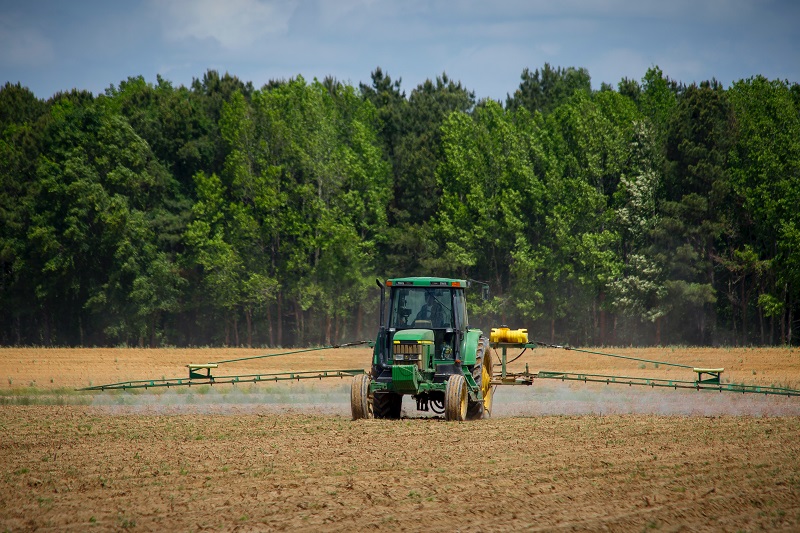In the agricultural industry, soil health has become a major area of focus. As farmers and agronomists look for ways to increase crop yields and reduce the amount of chemicals and pesticides used on crops, biofertilizers are becoming more popular. Biofertilizers are organic fertilizers made from natural sources such as bacteria, fungi, and other microorganisms. They provide essential nutrients to plants while improving soil quality over time. Let’s take a closer look at how biofertilizers are revolutionizing soil health.

The Shift Away From Chemical Fertilizers
Globally, chemical fertilizer use is at an all-time high. Depleted soils require constant application of elements like nitrogen and phosphorus, with many unintended consequences. Farmers and environmental leaders are realizing there must be a better way.
Biofertilizers offer numerous benefits compared to traditional chemical fertilizers, also known as mineral fertilizers. For one, biofertilizers are less damaging to the environment. They don’t contain harsh chemicals or toxins that can seep into groundwater or be carried by wind or rain into rivers and streams.
“If [chemical] fertilizers are applied in excess, they will only end up contaminating surface and groundwater. It has been estimated that in ideal conditions, about 2-10% of the fertilizers interfere with the surface and groundwater,” reported a 2018 study, Biofertilizer as an Alternative for Chemical Fertilizers, published in the Journal of Agriculture and Allied Sciences.
Other recent National Center for Biotechnology Information data shows that plants absorb only 30-40 percent of nutrients from chemical fertilizers.
A buildup of heavy metals in the soil caused by chemical fertilizers can also travel up the food chain. This has been seen in an increase in carcinogens like nitrosamines in leafy plants like spinach.
Another issue with chemical fertilizers is that they are carbon-intensive to produce. Mass production of ammonia began in the early 1900s to increase nitrogen in the soil. Today, ammonia is one of the most commonly made chemicals in the world, used in huge quantities as a fertilizer.
“This invention revolutionized farming, doubling the number of people that one acre of land could feed. But ammonia has to be made at a high pressure under high temperatures—meaning it takes a lot of energy to manufacture. Most of that energy comes from burning fossil fuels like coal and methane gas, which give off the greenhouse gas carbon dioxide, the main cause of climate change. Ammonia manufacturing today contributes between 1 and 2% of worldwide carbon dioxide emissions,” stated a 2021 article from MIT’s Climate Portal.
Biofertilizers, also known as organic fertilizers, can dramatically reduce emissions. Data published in the International Journal of Sustainable Development and Planning found “the reduction of GHG emission[s] in organic fertilizer production in comparison with the emission in mineral fertilizer production was on average 78% for Nitrogen and 41% for Phosphorus.”
Beyond environmental degradation, the impact of applying chemical fertilizers on the soil can also eradicate the beneficial microbes and insects living in the soil. Ironically, these organisms are correlated with plant health and yields. Killing them by applying chemical fertilizers has the opposite intended effect.
For these reasons, many countries are encouraging agriculture to move away from chemical fertilizers. For example, Europe wants to slash the use of chemical pesticides by 50% by 2030.

Photo Credit: BigHaat Agri Inputs Marketplace Platform
Biofertilizers As An Alternative to Chemical Fertilizers
Biofertilizers have been shown to improve plant growth without causing any adverse effects on human health or the environment. They introduce beneficial microorganisms into the soil to improve its structure and fertility. These microbial cells colonize the rhizosphere, rhizoplane, or root interior. Microorganisms are selected and tested for their plant growth-promoting (PGP) traits and colonization ability when used as biofertilizers. When successful, these organisms:
- Break down complex organic compounds, like nitrogen, into simpler forms that plants can absorb more efficiently.
- Improve the plant’s metabolism, or the plant’s ability to synthesize and transform substances into energy.
- Increase interactions with other beneficial soil microbes.
Additionally, biofertilizers can help control weeds and pests. Specific bacteria or fungi act as natural repellents for those unwanted organisms. For example, Bacillus thuringiensis, or BT, is a widely used microbial pesticide strain of bacteria.
In this way, biofertilizers can reduce the need for chemical pesticides. Especially when chemical pesticides can harm nearby ecosystems when used too frequently or in large doses. This makes biofertilizers an ideal alternative for farmers who want to reduce their reliance on chemical-based pesticides without sacrificing the yield or quality of their crops.

Investments in Technology to Improve Possibilities
Many questions still remain about how to create and apply biofertilizers successfully. Because they are living organisms, their varying shelf life during storage and application is one challenge. It’s also not a one-size-fits-all approach. Results can vary depending on the management practices of each field. Another unknown is how long-lasting the benefits of applying the bacteria are.
“The success of biofertilizers, however, not only depends on selecting specific microorganisms or functions but also on developing new formulations to ensure the survival of inoculated strain(s),” wrote the authors of the 2021 article, Rethinking Crop Nutrition in Times of Modern Microbiology: Innovative Biofertilizer Technologies, published in the journal Frontiers in Sustainable Food Systems. “We suggest that continuous product design, refinement, and validation should be oriented toward optimal and sub-optimal environmental ranges for microbial products (i.e., crop, climate, soil type, and agricultural practices). Finally, significant resource inputs from both [the] public and private sectors are needed to fill critical knowledge gaps in the field.”
Modern soil testing companies like RhizeBio are investing in advancing biofertilizers by providing farmers with an analysis of the soil’s rhizosphere, where a complex system of microscopic life supports crops. The Rhize Soil Health Test is a low-cost, high-tech soil testing approach that decodes the complexity of the soil microbiome to reveal biodiversity, functionality, resistance, biocontrol, hormone production, stress adaptation, and nutrient cycling potential.
This next-generation sequencing (NGS) technology allows farmers and agronomists to decide how to apply biofertilizers. It also allows them to predict and measure the response.
“Multi-omics and data analysis are key tools to begin to understand the complex dynamics taking place and to predict microbial response under natural conditions,” wrote the authors of Rethinking Crop Nutrition in Times of Modern Microbiology.
The Future of Biofertilizers
Biofertilizers are a choice for farmers looking to reduce their reliance on chemical-based products while ensuring maximum crop yields each season. By introducing beneficial microbes into the soil, biofertilizers can help promote healthy plant growth. All while reducing environmental damage caused by traditional chemical fertilizers and pesticides.
For this reason, many farmers are turning towards this innovative way to improve soil health and protect fragile ecosystems. With many advantages over conventional agricultural techniques, biofertilizers play an essential role in sustainable farming practices worldwide.
“In the future, bio-fertilizers and pesticides are likely to be the center of attention globally. They are known to be the solution to weeds, pathogens, and insects. At the same time, they are less harmful to human health and the environment,” wrote the authors of Biofertilizer as an Alternative for Chemical Fertilizers in the Journal of Agriculture and Allied Sciences.